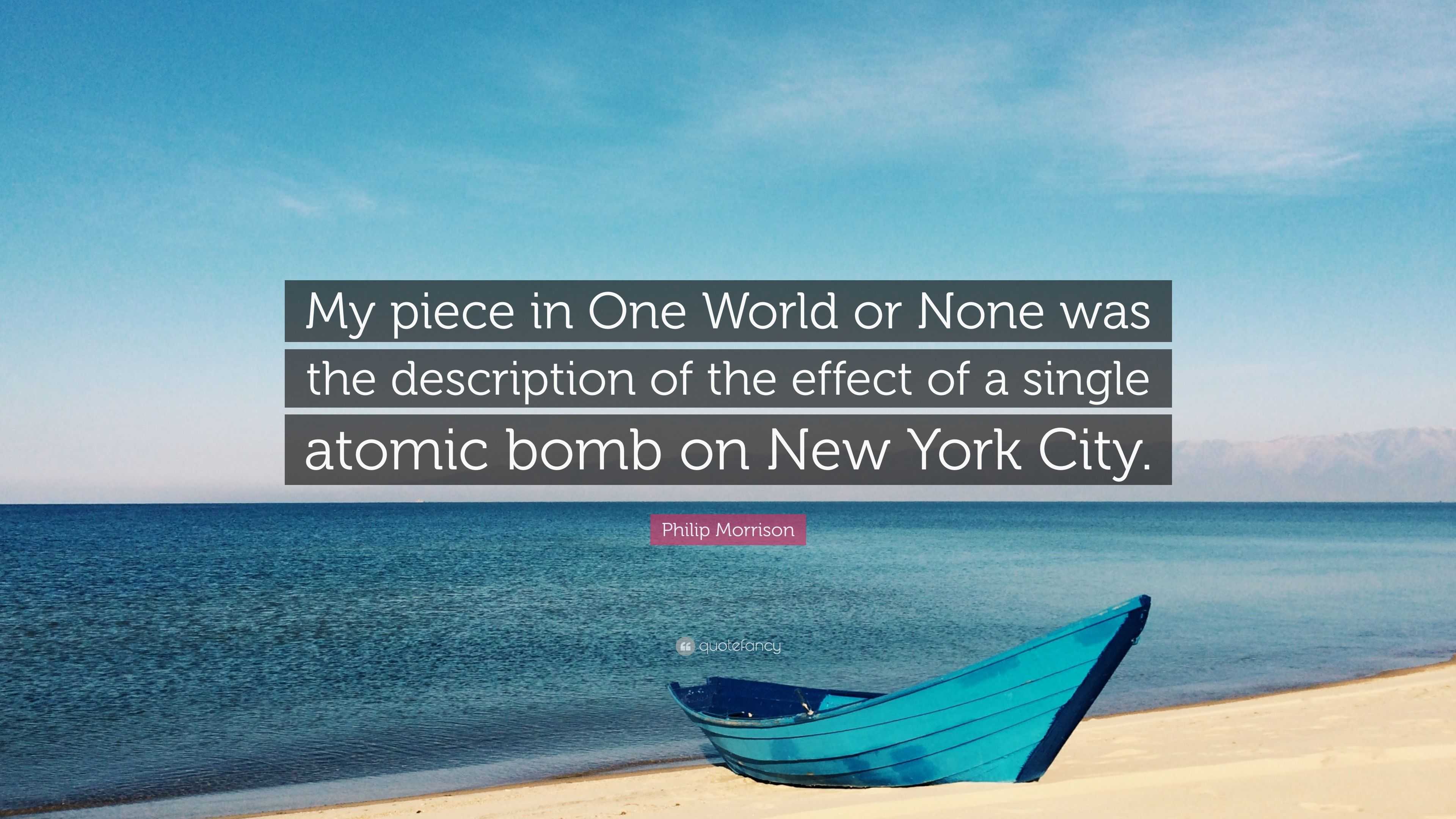
One World or None: A Report to the Public on the Full Meaning of the Atomic Bomb [Dexter Masters] on Amazon.com. *FREE* shipping on qualifying offers. In 1946, just. The original edition of One World or None sold 100,000 copies and was a New York Times bestseller. Today, with the nuclear issue front and center once more, the book is as timely as ever. Read an introduction written by Ivan Oelrich, Vice President of the FAS Strategic Security Program. One World Or None. I have no interest in ordinary Facebook pages!
As I was reading for my “Psychoanalysis and Narrative” class, which this week just happens to link paranoia and 1950s films dealing (in part) with the threat of the nuclear bomb, I came across what Cyndy Hendershot calls, in her book Paranoia, the Bomb, and 1950s Science Fiction Films, “the bible of the scientists’ movement,” One World or None. Made in 1946, it is the first “scare film” to warn the public of the dangers of the nuclear bomb. And, thankfully, it is on Youtube! After the break, I’ll give a close-reading of this short video. Before reading, I’d encourage you to watch it–it is less than 10 minutes long!
Joomla Templates Artistic. (just long enough to properly inculcate fear of the earth’s destruction). Very often, the makers of this film consciously provided a sense of continuity, preserving some small piece of the previous frame in transitioning to the next. In the title sequence, for instance, the “O” carries through with an icon of the earth. The emphasis on the globe here may be symptomatic of a peculiar phenomenon I have: Robert Jacobs’ idea that the nuclear bomb helped the ‘whole earth’ become a culturally salient icon. Essentially, a common threat meant a common community. Furthermore, in tracing the history of the atomic bomb, the video slowly fills out a world map with flags as it names nationals of various countries that have contributed towards the bomb’s invention, creating a sense of shared responsibility. Yet more important than this multicultural guilt is the growing sense of inevitability (related to the continuity of the film).
At each stage in the bomb’s history the music modulates one chord higher, leaving us trembling in anticipation of what is to come next, and eliminating any questioning as to where this narrative will lead: total destruction. Only once the nuclear bomb appears does the narrator introduce ambiguity, wondering whether mankind will use this new power for “destruction” or the “benefit of mankind,” the central question of the film.
At 2:50 we get–you guessed it!–footage from a (real) mushroom cloud explosion, which is juxtaposed with the model of an American city. Though the film’s creators undoubtedly created this sequence to scare American viewers and bring this problem ‘home’ (a sense of terror only magnified by the skulls at 2:53 and 3:09), it is interesting if we formally consider the film as a set of contrasts. Within that short segment we modulate from the real and past (the mushroom cloud) to the imaginary and future. Similarly, in the next sequence there is a contrast from the mushroom cloud at 3:41 to the scenes of wreckage after.
In this case, the post-nuclear landscape (it is either Hiroshima or Nagasaki) is meant to prefigure the possibilities that could abound if nuclear bombs are allowed to proliferate. The mushroom cloud becomes cause, post-apocalyptic landscape the effect. Though we are viewing historical footage, it takes on a future sensibility. Lines like “In the matter of seconds the downtown of New York would be a massive ruin” give credit to people’s fears of the instantaneous power of nuclear bombs, something I have been trying to locate in other nuclear texts in support of my “Red Button” chapter. The interesting part is that this is almost invariably not the case–nuclear bombs are most lethal in their fallout, which can take several days to become lethal. This isn’t to say that the entire corpus of post-war nuclear texts treat the nuclear threat as an instantaneous one (that is far from the case), but rather that this scare video will be useful as I outline the genesis of this fear. Then we get an interesting chronological history of weapons, ordered in terms of the number of casualties each produces.
This creates a ‘count-up,’ a sort of inverted count-down that can only end at infinity. The looped segment of the seemingly endless graveyard at 5:30 mirrors this infinite scope. In a way this reminds me of another ‘scare’ video, the, in which the little girl’s counting up is met by the count-down of the nuclear bomb.
Though here we get none of the tonal contrasts that are so evident in that text, the emphasis on counting, and how this is interrupted, might be considered symptomatic of narratological subversion. At the end of the video, we return to the planet Earth icon, where we began. We are exhorted to choose between “life”–symbolized by the Earth icon–and death–symbolized by the looping frames of graves. Again, there is a contrast between the static image of the earth, concrete and in the present, and the infinite rows of graves, stuck forever in an incessant loop.